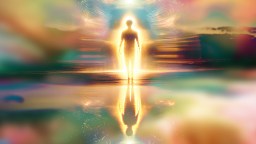Astronomy fans’ eyes are fixed on Jupiter this month.
Jupiter’s moon, Io, is the most volcanically active sphere in our solar system, and its largest volcano, Loki, is due for a spew. Voyager 1 has been sending back some stunning imagery, and now we’re just waiting for the show. But I don’t need a volcanic eruption to give Jupiter my attention. I’ve been obsessed with the mighty gas planet since I was a child.
When I was six, my father brought home a low-power telescope and set it up in the back yard. We lived in a tract home on the far edge of the Los Angeles sprawl, so there was little chance of seeing the majestic Milky Way. But Dad trained the lens on a bright spot in the sky, put a stool under the tripod and told me to get up and look in.
Dad tried to explain what a light year was. The light from a star could have left that star millions of years ago—in fact, some of the stars we were looking at might actually be dead by now. I thought about how big the universe was, and how much God must have loved me to make it all those years ago, just so I could look at it now. The number was unfathomable.
I asked Dad how many light years away Jupiter was. “Less than an hour,” Dad said me. That I could understand. That was doable. Maybe Dad and I could go there some time.
I learned a few of the constellations: The Big Dipper, Orion, and the Seven Sisters. I saw the Milky Way for the first time at summer camp in the mountains. But I always looked for Jupiter, the creamy white orb with its very own moons. Sometimes we could find it. Other times, Dad said Jupiter was on the far side of the world, ferrying across the sky during daylight, hidden from view.
My best friend in high school was as obsessed as I was with the mysteries of the universe—God, the planets, and boys. When she spent the night, we’d sneak onto the nearby golf course to lie on the empty, darkened fairways to get a better glimpse of the night sky. Sometimes we brought a cassette player. She introduced me to Queen, and I introduced her to Holst’s The Planets.
Julia wondered why Holst called Jupiter “The bringer of jollity.” I wondered why jollity had fallen out of common speech and if we could revive it. Jollity was joy. That’s what Jupiter brought me. Joy. The joy of discovering the universe and music and best friends and what it meant to be a human on the verge of adulthood.
What I saw in physics class
I thought about becoming an astronomer, but that would involve math. I hated math. There was no beauty or truth in math. Just numbers and formulas on a blackboard. I got rid of my math requirements during summer school, so I’d have more time for theater and creative writing classes. But I couldn’t take physics until senior year—spring semester, the last class of the day. I was ending my high school career with math. Yeesh.
Our physics teacher, Syd Lambert, was tall, gawky, and so farsighted that eyes looked twice their size in his glasses. His buddy, chemistry teacher John Cullen, wore his hair in a gray pompadour and sang Kenny Rogers’ “Lucille” while we were taking tests. Cullen had a free period during our physics class, so he made a habit of coming over to heckle. We called them Syd Vicious and Johnny Rotten. They made me love going to physics class. Except for the math.
March started off on a nadir. I found out my boyfriend was cheating on me. Gutted, I escaped home for lunch, skipped PE, and only came back for physics. But one afternoon I walked into the physics room to find Syd Vicious and Johnny Rotten glued to a TV they’d pilfered from the library.
“What are you –”
“Shh!” When the program went to a commercial break, Syd and Johnny stood back and let us see what was on TV. It was JPL (NASA’s Jet Propulsion Laboratory), transmitting Voyager 1’s images of Jupiter. That’s what we were doing today. Watching Jupiter.
I was mesmerized.
Polkinghorne, math, and beauty
I pursued a career in film, chasing those moment of joy where I became part of something bigger than me. But there was a lot more math than I had bargained for. I clocked my mileage, counted the hours in waiting rooms, the number of auditions and meetings before I could count on a booking. I played the odds, betting that there would be more moments of joy than of disappointment. But I was bad at math.
Eventually I went back to school and started teaching screenwriting. Some time later, I attended a lecture and discussion with John Polkinghorne, the English physicist, theologian, and Anglican priest. Polkinghorne was instrumental in developing the theory of quarks and was awarded an OBE. He spoke a lot about compatibility of science and faith, but it was something else that captured my attention that evening. It was about math.
“When a math equation is correct, we call it beautiful,” Polkinghorne said. It’s elegant, with no unnecessary detours. Just the purest, simplest form of the equation, and it leads to the truth. That is beautiful.
I sat there, wondering: If true math was beautiful, was true beauty mathematical? Was math lurking behind the art I’d pursued all my life—storytelling? Of course, I’d learned classic story structure in graduate school. Joseph Campbell identified it as “The Hero’s Journey.” Countless story gurus in Hollywood devised their own brands of it, some profound, some reductionist. But even if it got formulaic, there was a form. I taught it to my students, urging them to follow it because it would give their story a shape and increase their odds of selling a script. But I could never explain why.
Polkinghorne was telling me why. Math.
It was all connected, the art and the math. The storms on Jupiter, the stories the Greeks saw in the stars, and the movies we pay to watch in the dark. There’s a story the Universe is telling us. When it’s true, it’s beautiful. Whether you use science or faith to describe it, it’s there. It’s as unfathomable as a light year is to a six-year old. But it’s as beautiful as it is true.
One afternoon in class, I plugged in my computer to the projector to launch a PowerPoint, and my students gasped at the sight my computer’s wallpaper: a large orb with countless swirling blue circles. It was the South Pole of Jupiter.
I’d been following the Juno Mission and downloading every image that it sent back. They wanted to see more pictures. So I showed them all the images I’d squirreled away on my laptop. They were as enchanted as if I’d been showing the final thrilling moments of an Oscar-winning movie.
It’s all part of the same story. And it’s beautiful.
Watch this interactive NASA 360 video about Juno’s mission to Jupiter:
And this NASA video of the Hubble Telescope’s view of the Great Red Spot:
The post The Pull of Jupiter appeared first on ORBITER.





